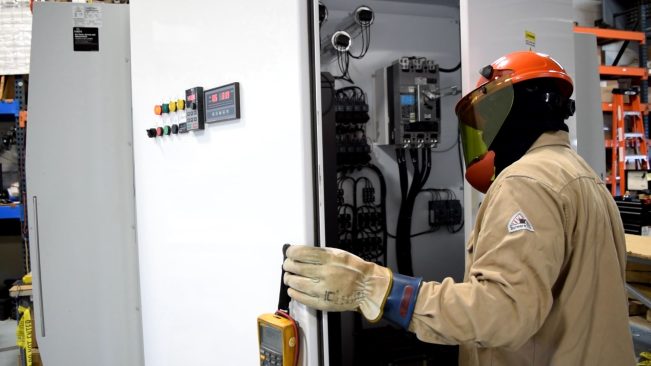The dangers of arc flash are present in numerous areas of municipal operations. We might think of them as solely an electrical department issue, but arc flash can cause severe injuries to anyone working on or near electrical equipment. For this reason, OSHA updated their Electric Power Generation, Transmission, and Distribution standard (1910.269) and Electrical Protective Equipment standard (1910.137).
department issue, but arc flash can cause severe injuries to anyone working on or near electrical equipment. For this reason, OSHA updated their Electric Power Generation, Transmission, and Distribution standard (1910.269) and Electrical Protective Equipment standard (1910.137).
Arc flash is a phenomenon where a flashover of electrical current leaves its intended path and travels from one conductor to another or the ground. The cause of this can be any of the following:
- Dust
- Dropped tools
- Accidental touching
- Material failure
- Condensation
- Corrosion
- Faulty installation
Electrical transformers and switchgear need to have arc flash warning labels. These labels need to be in accordance with NFPA 70 – National Electric Code, Article 110.16, to warn qualified persons that a potential arc flash hazard is present. This will allow personnel to select proper personal protective equipment (PPE) following acceptable safe work practice standards (see 1910.137 above).
The OSHA standard 1910.137 on PPE for electrical work requires that those employees working in areas of potential electrical hazards be provided with and use electrical protective equipment, including:
- Eye and face protection
- Gloves
- Helmets
- Flame-resistant (FR) clothing
- Rubber insulated blankets
- Matting and rubber insulated gloves and sleeves
Arc flash signage should denote the warning of electrical injury first. Additional ways to protect employees include:
- A solid lock-out/tag-out program
- De-energizing circuits
- Insulation
- Guarding
- Barricades
- Ground fault circuit interrupters (GFCIs)
- Work practices that include training and PPE
- Grounding of equipment
Equipment evaluations for arc flash and shock protection should be standard practice. The evaluations will identify approach and protection boundaries (limited, restricted, and prohibited) to determine what PPE is necessary to keep the employees safe.
According to the OSHA Personal Protective Equipment Standard 1910.132, it is up to the employer to conduct a job hazard analysis to identify the workplace exposures and hazards present. From there, they can determine what PPE is necessary to protect the workers from threats that can't be removed through elimination, substitution, or other engineering and administrative controls. The employer is required to provide the appropriate PPE for the job and train the worker on how to use, store, and maintain the equipment.


